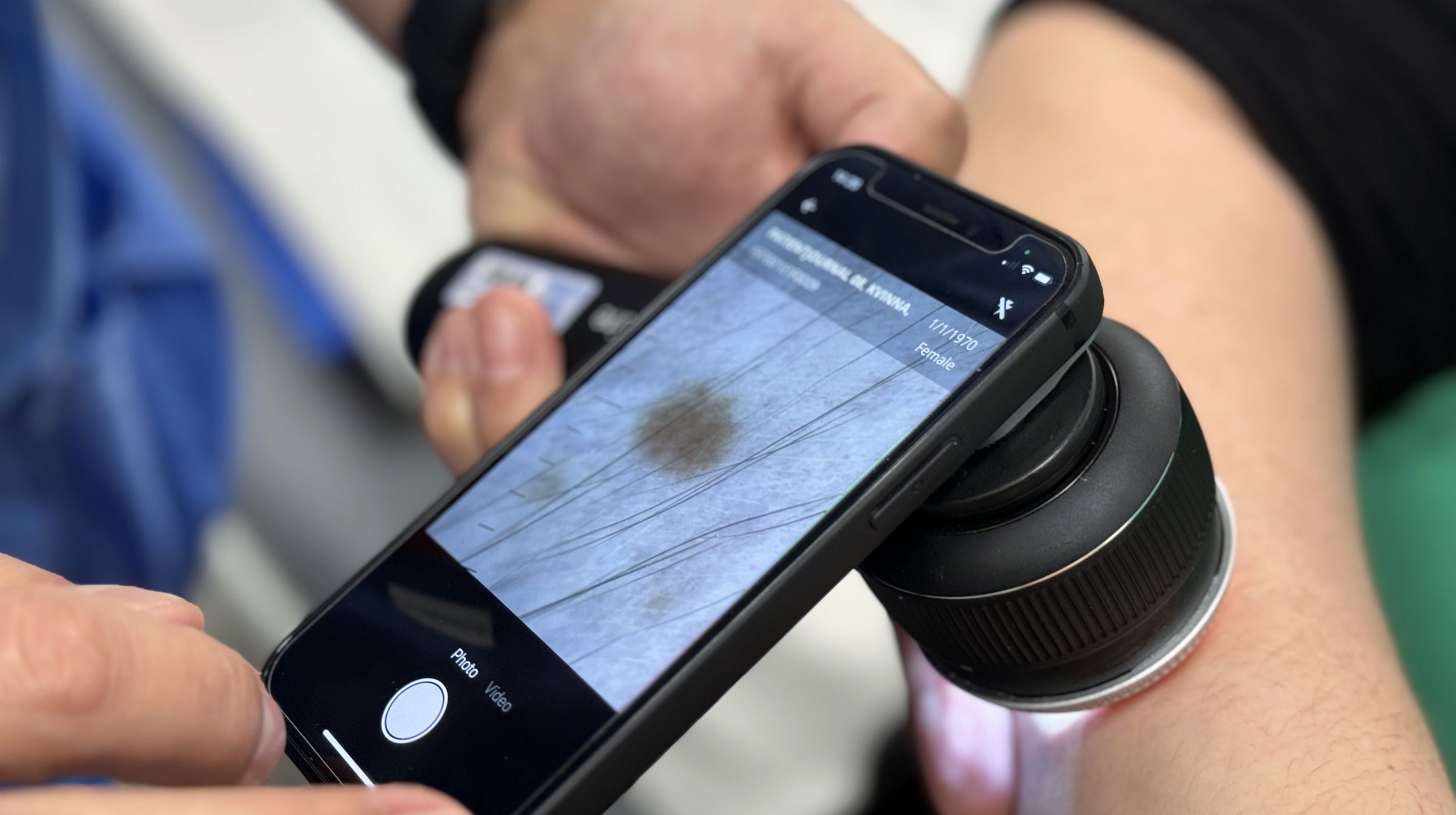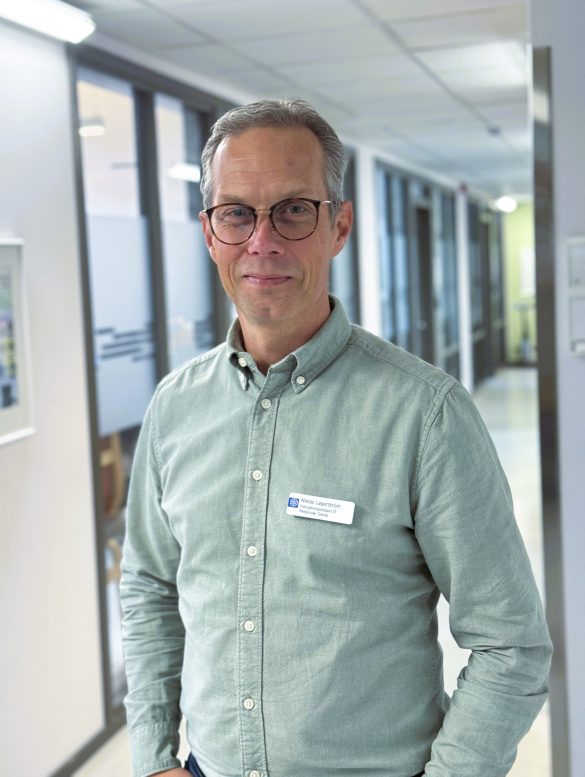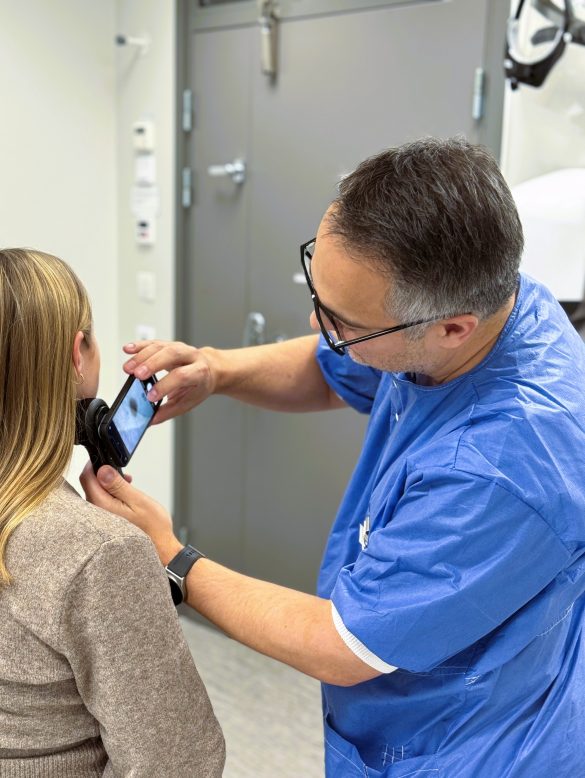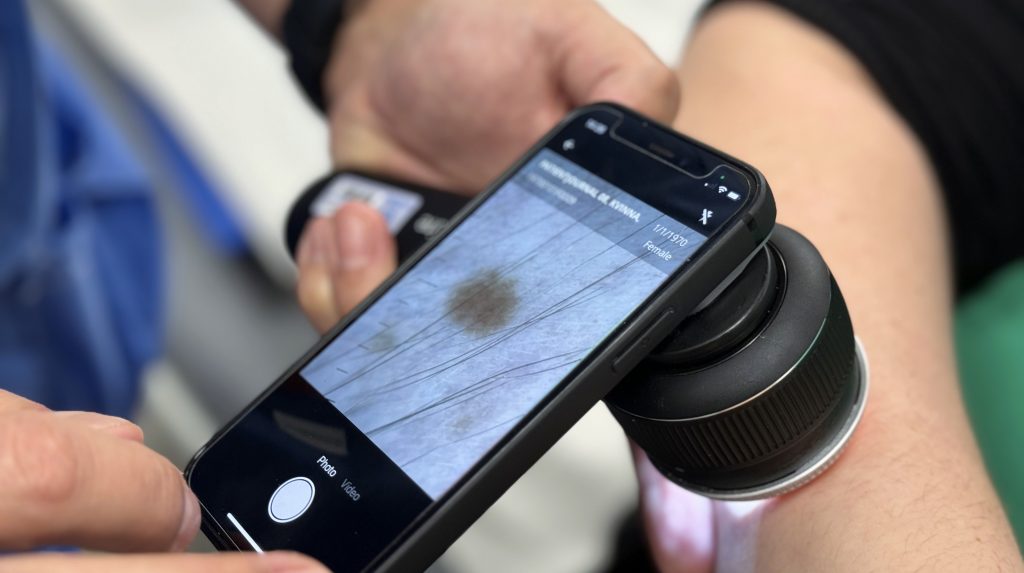Broad introduction of mobile app and increased patient security
After the successful introduction within neurology, the region has continued to introduce the app in several units, and today it is used at the region’s dermatology clinic, the hand and plastic surgery clinic (including the burn ward, BRIVA), the respiratory medicine clinic, the pain management department, and some ten primary healthcare centers. Lagerström explains that these units primarily focus on still images, unlike neurology.
“BRIVA takes pictures with another mobile app, where they also analyze the images,” continues Lagerström. “The Sectra app’s option to import images from the device’s camera roll allows them to import these images to Sectra VNA directly from the mobile device and to avoid having to manually transfer the images to a computer before they can be imported, which they needed to do before.”
Lagerström and his team are independently introducing the app within a new unit—everything from taking requests from the unit to surveying, configuring, and training the department in the use of the app. “It’s a fairly quick and easy introduction. When you look at how the entire multimedia flow is introduced, from the journal system all the way to the PACS, there’s very little we need to do to get the app flow started for a unit,” he explains.
When asked about how the app has been received by users out in the field, Lagerström responds that his experience is that it has received a positive response, not least considering the increased patient security. “They think that the automated flow is excellent—not having to import images manually and guess their way to which images belong to which patient.”
Once again, he mentions the workflow that was developed in 2018 during the Hudprocessen project, which was based on starting an image series with patient information, taking images, and closing the image series with the same patient information, so that all the images within the two files are of the same patient.
“The problem, however, is that when they are imported manually, there is a risk that the user will choose the wrong images, even with the images that begin and end the series. Sectra’s app provides the user with patient information throughout the entire flow and image capture process. The patient information is taken from the booking in the journal system, where this information has also been synced with the population register. That was also a contributing factor in our decision to introduce it. The number of cases where those of us working in IT need to manage the transfer of images that have ended up associated with the wrong patient has now decreased dramatically.”
Significant time savings at the dermatology clinic
During our visit to Linköping University Hospital, we also took the chance to visit the dermatology clinic. This department generates a significant number of images, since they carry out 350 to 400 examinations per month, with an average of six to ten images per examination. Here we have the chance to meet Elin Johansson, a healthcare administrator, and Dr. Alexander Shams, chief skin tumor specialist at the hospital’s dermatology clinic.
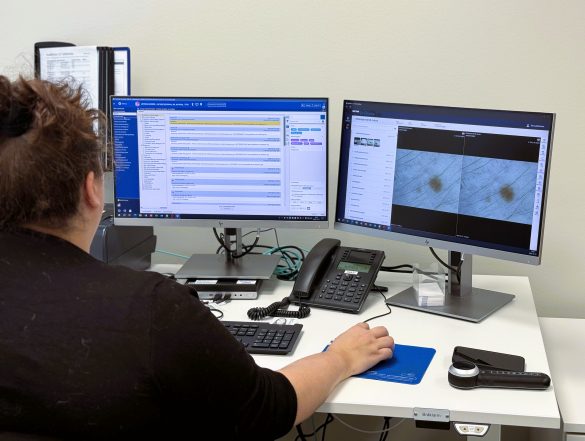
Elin Johansson, healthcare administrator at the dermatology clinic at Linköping University Hospital
“In 2018, we replaced the system cameras with mobile phones,” begins Johansson. “These images were stored locally on the device and loaded to the central archive by a healthcare administrator. It took up a lot of our time—we had to spend three to four hours per day transferring images from cameras to the PACS. That’s why we were interested in another solution that could free up time for us to do other things.”
“People also forgot to take the first or last image of the series, one with the personal identification number,” she continues. “Sometimes the images ended up with the wrong patient, and we couldn’t fix it ourselves, so we had to contact our IT support, who went in and transferred the images manually. That also took unnecessary time.”
Since June 2023, the dermatology clinic has been taking images with the Sectra Upload & Store App instead, and they are automatically uploaded to Sectra VNA. As previously mentioned, they also have access to patient information in the app since they create media documentation ahead of time in the journal system, which is available to the doctor through a work list in the app.
